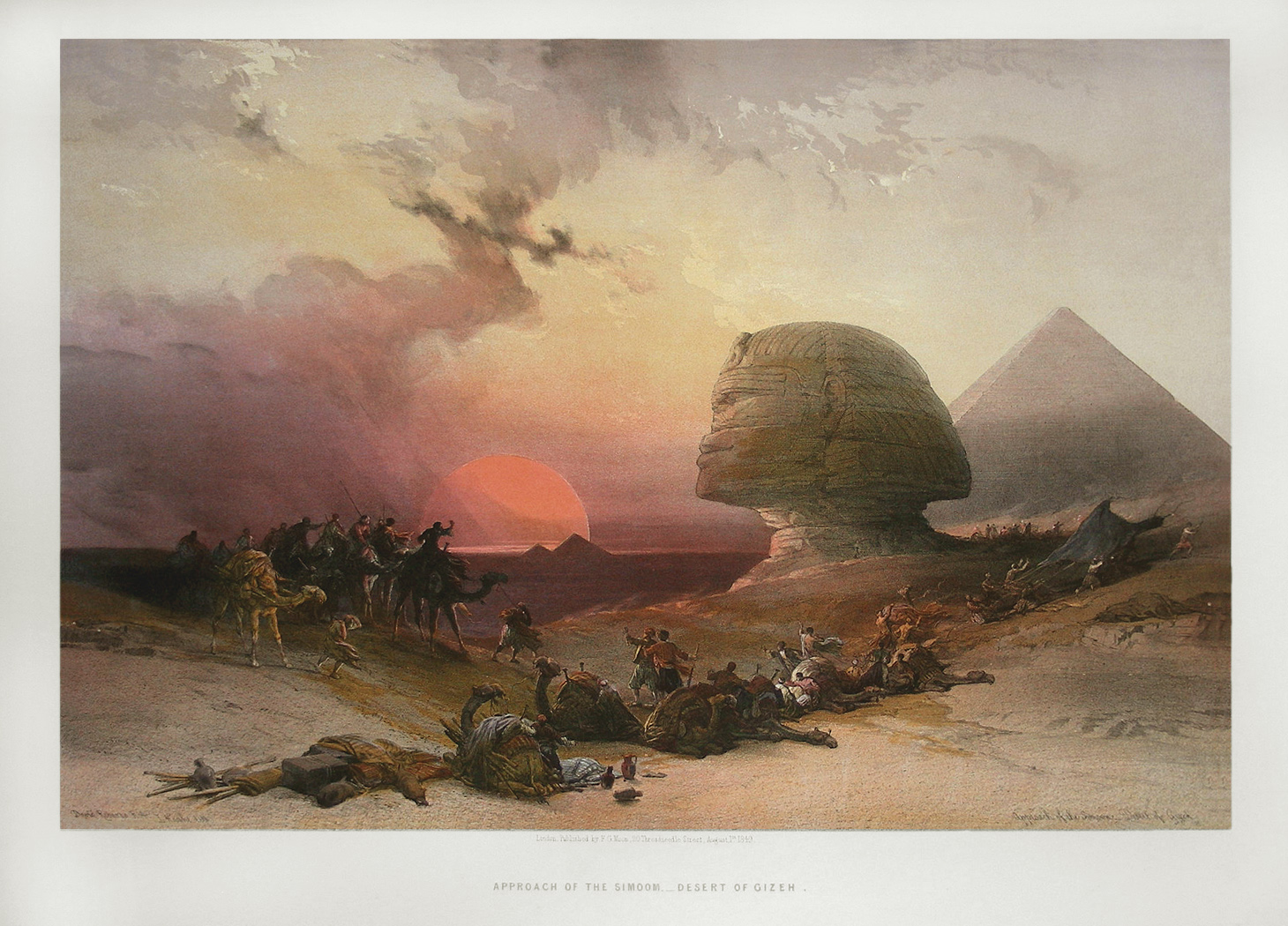

Approach of the Simoon, Desert of Gizeh, shown above, is a perfect example of Roberts' combination of accuracy and theatricality. On the one hand, the concept of the approaching sandstorm, called the Simoon, and the detail of the figures is accurate. On the other hand, the placement of the Pyramids and the Sphinx, and their orientation to the setting sun, has been greatly altered for effect. Nonetheless, this has become perhaps the "signature image" for Roberts lithographs.
On February 6, 1839, Roberts' caravan set out for Jerusalem. He and his two western companions now dressed in Turkish garb, not only for comfort and protection from the heat, but in order to disguise their Western appearance, since the route they would travel across the Sinai Desert was known to be infested with bandits. The group had purchased four camels and associated gear, including a stock of rifles, pistols and sabers which were as much for intimidation and show as for actual use. They hired an escort of fifteen Arabs, both as bodyguards and guides, led by Sheikh Hussein of the Beni Said tribe. Their caravan was now comprised of 18 men and 25 camels.
After three days travel to the east they reached the northern end of the Gulf of Suez, and from there headed southwards towards the tip of the Sinai Peninsula, where they would visit the ancient monastery of St. Catherine at Mount Horeb. The journey was arduous and the landscape barren, but its association with Biblical events held great meaning for Roberts. Their general route would follow the Biblical path of the Israelites from Egypt to the promised land.